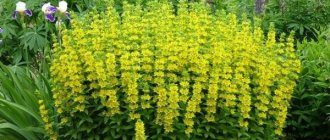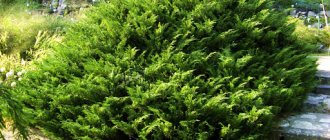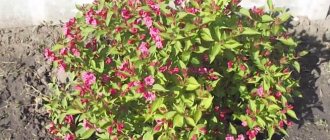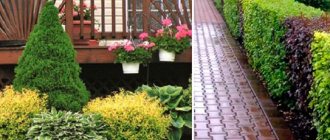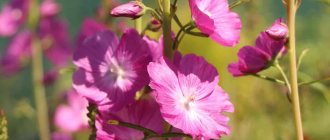How to care
Let's find out what kind of care is required for perennial gypsophila growing in the garden.
If the summer is hot, the plant requires regular and fairly abundant watering. Drought should not be allowed in the garden bed - in such conditions the decorative value of the shrub is greatly reduced. Young plants can especially suffer from drying out.
However, overwatering is even more unacceptable. Stagnation of moisture in the soil often leads to diseases of gypsophila, rotting of its roots, and even death.
Fertilizers for this plant are required twice during the growing season. However, if the soil in the garden is fertile, and gypsophila grows under abundant sun and is provided with sufficient heat, you can do without fertilizing at all. But, of course, first of all you should focus on the appearance and health level of the plant.
If you decide to apply fertilizer, know that gypsophila needs both minerals and organic matter. However, complex minerals should be used, and from organics, only a weak solution of mullein is suitable. Fresh manure cannot be added at all.
If the plant is not trimmed periodically, it will grow too large and look unkempt. This perennial can grow to such an extent that it smothers weaker flowers and herbs nearby. Therefore, in cultural gardening, the growth of gypsophila is artificially limited.
Pruning is usually done after flowering, when the stems have already dried thoroughly. The bushes are shortened with pruning shears, leaving each with only a few shoots in the central part. Thus, the plant goes to winter. In the spring, gypsophila will begin its growing season and quickly grow again.
Since the article is about a perennial, it is clear that it will periodically require replanting. By the way, there are varieties of gypsophila that can grow in one place for many years, but most varieties still need to be replanted.
The procedure is rarely carried out: usually only once or twice during the life of the bush: after all, if a young two-year-old gypsophila undergoes the procedure successfully and without consequences, then an older one may get sick.
Many varieties of gypsophila are frost-resistant and do not require shelter. However, if we are talking about young first-year plants and growing in a northern, Siberian climate, it is better to take precautions in advance about protection.
Before the onset of cold weather in the fall, mulch the bed with humus or peat with trimmed gypsophila. It is advisable to cover young plants on top with spruce branches or dry leaves for reliability.
Benefits of Perennials
Long-term curved flora has a number of advantages, which are especially noticeable against the backdrop of annual “brothers”. These benefits include, but are not limited to:
- Unlike one-year-old and thermophilic vines, long-term vines often demonstrate good cold tolerance. This allows them to be grown and enjoyed for several years.
- Vertically growing vineyards do not require much space for planting. Often 40-60 cm wide is enough.
- Caring for shrubs is much easier than caring for annual flowers.
- Thick perennials provide excellent wind protection. In addition, they form an additional, convenient soundproofing layer.
- Such plants are a real boon for the inventive landscape designer. With their help, you can create the most bizarre structures and artificial grottoes, which are more likely to promote quality relaxation.
Perennial garden underground Flowers: https://6.com////ground cover.
- One can hardly imagine decorating garden gardens without packs. In the practice of home gardening, gazebos have long been successfully used - especially Italian-style pavilions, maximally visible vertically growing green spaces and flowers.
- In addition to “decorative” possibilities, densely planted, curved plants well hide the imperfections of buildings and camouflage not very beautiful buildings and objects (barns, workshops, garages, cellars, landfills).
- Willow bushes attract the attention of birds looking for Nystplatzen. It goes without saying that it is important for the garden and garden to have these active fighters of all types of insect pests in close proximity.
Please note: The best choice for landscaping with openwork, well-ventilated and not too shaded arbors is to plant cultivated grapevines.
Pruning perennial gypsophila, preparing for winter
Tall species of perennial gypsophila can grow up to one and a half meters in height. And under the weight of the stems it can deviate to the side. In this case, the external effect of the plant suffers. Additional supports help to avoid deviations.
Without care and restriction of growth, gypsophila can degenerate into a weed and interfere with the growth of other plants. In mid-October, it is customary to prune faded bushes, preserving 3-4 basal stems up to 7 cm long. A timely combination of fertilizing and pruning helps the plant to form strong young shoots.
Perennial gypsophila takes root in the first and second years and gets used to the planting site. And only then should you expect abundant growth and flowering from it. Gypsophila is frost-resistant. But gardeners prefer to mulch young plants that have not yet had time to properly take root and little-known varieties, covering them with peat, leaves, and burlap.
Gypsophila care
How to make supports for an adult plant
If we grow gypsophila paniculata or other tall species of this plant, then under the weight of the stems they have the habit of bending in one or more directions. This significantly reduces the visual effect, violating the overall proportions of the “blooming cloud”, forming voids in it. To prevent this from happening, additional care is required in the form of installed wooden supports. These can be supports in the form of a slingshot or U-shaped supports - depending on the size of the plant, the degree and direction of its “collapse”.
Methods and features of reproduction
The most popular methods of propagating gypsophila are: seeds in open ground, seedlings, cuttings.
The optimal and effective way is to plant seeds to obtain seedlings. In March, the seeds are sown in closed ground, after moistening the soil.
Seeds should be placed at a distance of up to 10 cm from each other and sprinkled with a small layer of soil. After this, cover the container with film and leave for germination. After 2 weeks, shoots will appear.
You can plant seeds in the ground in spring (not only perennial forms, but also annuals). Terry forms of gypsophila can be propagated by cuttings; for this, young shoots that appear in May or June are taken.
But it should be remembered that cuttings do not take root well and cannot tolerate excessive watering. The rooting process can last up to 2 months.
Scheme of sowing gypsophila seeds for seedlings
Although the process of growing seedlings itself requires more time, it is still much easier to sow seeds at home than directly into open ground, because this sowing process is easier to control. So, it is recommended to plant gypsophila seedlings according to the following scheme:
- The first step is to take care of the drainage system. If there are no drainage holes at the bottom of the container, be sure to make them! Then a thin drainage layer (about 1.5-2 cm), for example, perlite, fine expanded clay, broken brick, should be placed on the bottom of the container.
- Now you can fill the container with soil, leave a small gap to the edges, about 1-1.5 cm.
- Gently level the surface of the soil and lightly moisten it with a spray bottle.
- You need to sow gypsophila seeds evenly over the surface of the ground in a wide bowl.
Diseases and pests
The plant is highly resistant to diseases and damage by parasitic insects. However, in conditions of waterlogging, it often suffers from fungal and putrefactive pathologies.
To carry out preventive treatment against fungus, in the spring it is recommended to spray the plants with copper-containing preparations:
- oxychome,
- copper sulfate,
- Bordeaux mixture.
This treatment will save the flower from gray rot, rust, and smut.
If the disease does occur, remove all affected shoots, and then treat with the following drugs:
Of the pests, the main danger is represented by nematodes: root-knot and cyst-forming nematodes. Although insects are tiny, they can cause significant damage to the health of the bush. Nematodes settle in root tissues, damage them, and deplete them. Because of the roots, the whole plant suffers: it withers, dries, loses its decorative effect, and in severe cases dies. The drug Bi-58, as well as Tiazon and Rogor, will help get rid of nematodes.
If spraying on top does not produce results, more capital measures will have to be taken. You need to dig up the plant and place its roots in hot (40-50 degrees) water for 20 minutes. This way, all the nematodes will die, and the bush then needs to be transplanted to another place. Treat the area where gypsophila grew before transplantation with a strong insecticide and antiseptic: nematode larvae may be in the soil.
Planting and propagation
Kachim paniculata and other species require quite a large space for themselves; close planting can slow down growth and development. It is better to plant grown young bushes separately, since their rapid growth will quickly fill the space around them. An adult kachim reaches a diameter of about 1 m.
When planting and caring for perennial gypsophila, it is necessary to choose a permanent place, since many species and varieties react extremely painfully to transplantation.
At home, gypsophila is grown from seeds and cuttings. This process is not too complicated; even a novice gardener can cope with planting and caring for gypsophila.
Propagation by cuttings
Before the beginning of the flowering period, young shoots are cut off, which in separate containers are deepened into the prepared soil by 2 - 3 cm. The earth mixture should be loose, well-drained, with the addition of chalk. When propagated by cuttings, perennial gypsophila requires special attention, since rooting is quite low.
To maintain humidity and eliminate drafts, the cuttings are covered with a transparent cap. Water moderately as the soil dries; do not allow excessive watering and stagnation of water. Keeping temperature +20°C with 12 hours of daylight. To ensure adequate lighting, the cuttings are placed under phytolamps. The roots of gypsophila, when planted in a permanent place in the garden, must take root in the soil before the cold snap begins; therefore, the transfer is carried out at the end of summer. Before wintering, young plants need to be covered.
Propagation by seeds
Gypsophila is grown from seeds in autumn or spring. In the fall, the seeds of annual species and varieties of gypsophila are sown directly into a prepared bed, from which in the spring the young seedlings are transplanted into flower beds.
In spring, gypsophila seeds are sown in April - May for seedlings in separate containers. This method of propagation is in most cases used for growing perennial varieties. In loose, light, moist, well-drained soil, make furrows 0.5 cm deep, sow seeds, and sprinkle with soil. The container with soil is covered with a transparent material and left in a warm, bright room.
When growing gypsophila from seeds, the first shoots will appear after 1 - 2 weeks; they need to be thinned out. For better seedling growth, it is necessary to provide additional lighting, since daylight hours for young shoots should be at least 13 hours. As soon as the seedlings have 2–3 true leaves, they are transplanted into open ground at the rate of 2–3 bores per 1 square meter.
Planting gypsophila
Before sowing gypsum seeds directly into the soil or seedlings, you need to select a suitable area of the garden. It should be sunny, free, dry, with well-loosened soil containing lime. Since the bush suffers from replanting, the place must initially fully meet all the requirements for the full growth and development of gypsum.
To avoid stagnation of water, expanded clay, broken small bricks, and nut shells are added to the soil before planting.
Growing from seeds will not bring many difficulties; even a novice gardener will appreciate the simplicity and unpretentiousness of this amazing flower.
Growing gypsophila
The resulting seedlings from gypsophila seeds are planted in open ground on a prepared area, 2 to 3 sprouts per 1 square meter. After 2–3 years, one plant is left in this place, the rest are planted. This will allow you to get a more flowering, lush bush. For closed greenhouses and winter gardens, the number of plants per square meter is increased from 3 to 5.
Growing gypsophila quite close to each other (up to 4 sprouts) allows you to get very pronounced, relatively dense openwork bushes in the shortest possible time, which can decorate any flower garden with their appearance.
The use of perennial gypsophila in landscape design
In cultivation, gypsophila is unpretentious and is widely used in landscaping. Gypsophila paniculata L. is very popular among gardeners. A decorative flowering specimen can take the form of herbaceous shoots or subshrubs. The abundance of side shoots gives gypsophila a spherical shape, which is used as an addition or frame to a flower bed. A cut plant can decorate a bouquet made up of large and bright flowers, both fresh and dried.
To decorate the garden, gypsophila can be planted inside a green lawn. The airy haze of inflorescences can become an excellent background for spectacular roses, cannas, and irises, since some flowering crops do not suit a background of bright greenery. Low climbing varieties are used to highlight the landscape boundaries of a garden plot, to design a border, alpine slides or rockeries. Rocky surfaces and rocky slopes strewn with small flowers look beautiful.
Main Application
Due to its versatility, white paniculata's gypsophila is ideal for complementing holiday bouquets. Any set of flowers, be it for a wedding or for a birthday, will look more original and elegant if you add a couple of sprigs of plaster of paris to its design. The plant will go well with large flowers of bright colors. When planning landscape design, gypsophila will also come in handy. To do this, use a plant of dwarf forms or subshrubs. As a result, you can get the following options:
- the flower serves as the central part of the composition of a flower bed or flower garden. It is ideal for decorating artificial landscape elements in the form of slides;
- decorative design of rock gardens;
- creating an individual look for borders;
- design of a veranda or garden.
Rock garden with gypsophila
Gypsophila perennial diseases and pests
Gypsophila is sufficiently adapted to resist various diseases and pests. But if there is excess moisture, the flower can be affected by cyst nematodes, gray rot and other ailments.
The nematode attacks the root system. This pest absorbs plant juices. Detecting the disease is difficult. Its main signs are curled leaves, slow growth, and changes in the color of the inflorescences themselves.
To prevent the development of nematodes, the plant must be sprayed with phosphamide every 5 days. If the procedure does not give the desired effect, the bush is dug up and treated with hot water, which is destructive for the nematode.
If a plant is infected with gray rot, gray spots appear on its leaves and stalks. In this case, you should remove the rot from the flower and treat it with a solution of copper sulfate.
Jaundice disease is accompanied by yellowing of leaves and deformation of buds. To combat the disease, affected areas are also removed from the bushes, and the plant itself is treated with copper sulfate.
Disease prevention measures include timely weeding, systematic monitoring of the condition of flowers, leaves, and stems. By following the rules of care, you can get a healthy and aesthetically attractive plant.
Articles for gardeners and gardeners
When to sow eustoma for seedlings in 2021 according to the lunar calendar
When to plant eggplant seedlings according to the lunar calendar in 2019 Tomato seeds for greenhouses, self-pollinating, low-growing
Tomato seeds: the best varieties for open ground, low-growing
Gypsophila varieties, types
Gypsophila annual planting and care
Among annuals, there are only two types: graceful and wall. Planting is done only by seeds; subsequently, you can sow every two weeks to prolong flowering. They are undemanding in the choice of soil, but do not like excess water.
Remember! To get continuous flowering of gypsophila throughout the summer, you can sow the plant every two weeks.
One of the most popular annual varieties is gypsophila annua crimson. This is an openwork bush up to 50 cm high with rather large crimson flowers.
Perennial gypsophila: types and characteristics
Many gardeners, due to the unpretentiousness of the plant, prefer to grow perennial varieties. Among the perennial species of gypsophila, the following stand out:
- Paniculata.
- Creeping.
- Isplicular.
Gypsophila paniculata is the most famous and widespread species. In Russia, the growing areas are from China to the Volga region. With a height of 120 cm, the plant can reach a meter wide.
Gypsophila paniculata is valued by gardeners for its appearance, reminiscent of a large openwork ball. The flowers of the plant are small, up to 0.6 centimeters in diameter, collected in inflorescences and abundantly covering the entire bush.
The color can be white, pink, and some flowers may darken during blooming. Simple and terry varieties are known.
This species blooms from mid-July to August. After flowering, the plant forms fruits in the form of boxes with a huge number of seeds. Seeds remain suitable for planting for 2-3 years.
The most famous varieties of this species are:
- perennial gypsophila Pink – double, dark pink flowers;
- perennial gypsophila Flamingo - double, with pink flowers;
- perennial gypsophila Bristol Fairy - double, white flowers.
Creeping gypsophila is the most unpretentious low-growing plant. Originally from the mountainous part of Europe. The height of this species can vary from 5 to 20 cm. It grows up to 50 cm in width. The shoots of the plant spread along the ground, forming a dense green cover.
The flowers are small, white and pink depending on the variety. The flowering time is from June to July. Creeping gypsophila grows in one place for up to four years. It can successfully decorate the landscape of rocky areas, rockeries, and borders.
The most popular varieties of creeping gypsophila:
- perennial gypsophila White - flowers are simple, white;
- gypsophila perennial Fretensis - flowers are simple, pink.
Gypsophila yapulata is another mountain plant. It got its name for its resemblance to the plant, a herbaceous rock flower. Gypsophila yapulata grows in the Himalayas at an altitude of up to 5 thousand kilometers. It has beautiful white and purple flowers with pink stripes. This species prefers soil with a high lime content.
The flowering period is from May to July, but occurs only after a few years. This species is also characterized by high frost and drought resistance. An adult plant is up to 20 cm high and resembles small green pillows covered with small flowers. Convenient for use in single plantings for lawns and rock gardens, as well as continuous border lines.
The following varieties of this gypsophila are known:
- Gypsophila pixie splash - white flowers with veins.
- Gypsophila cerastioides - white.
You can add several more types of perennial gypsophila:
- Areciformes, growing in the mountainous regions of Iran, forms white thickets up to 3 cm high. It is not popular in Russia due to its slow growth and fear of frost.
- Pacific, growing in the Far East, has a height of 80 cm, the leaves are wide and large, the flowers are light pink.
- Patrena, preferring mountain slopes and river pebbles. It has bare stems with a highly branched apex.
Botanical description and optimal conditions for growing gypsophila
Gypsophila is a shrub or subshrub from twenty to one hundred and fifty centimeters in height. It is characterized by powerful, taprooted or branched rhizomes and creeping or erect stems. Whole, small foliage can be lanceolate, oval or spatulate in shape. During flowering, the plants are decorated with loose panicle inflorescences, which are formed from small simple or double flowers of white, greenish or pink color. They have a very pleasant aroma. The fruits are single-locular polysperms that can be ovoid or spherical in shape.
To plant gypsophila, you should choose dry, well-lit areas. The soil should be loose, light, air and moisture permeable with a slightly alkaline reaction. Caring for gypsophila consists of watering as needed, monthly fertilizing with complex mineral fertilizers, weeding and carrying out preventive examinations for the presence of diseases and pests. Before flowering begins, you need to provide the bushes with supports so that they do not break under the weight of numerous inflorescences. To prevent gypsophila from growing too much, pinching and pruning should be done. This will also ensure that the plant grows lush with new shoots growing.
Basic plant requirements
This plant loves mountains. Therefore, the landing site should be dry and sunny, like on a hot mountain slope.
Choosing a landing site
Gypsophila should be grown in sunny places, then flowering will be abundant. She endures the scorching sun. In light shade the plant blooms less, but the flowering period is longer.
Gypsophila cannot be planted in the shade; it should not be planted under trees or in the north. The plant can be planted in autumn or spring.
Gypsophila is frost-resistant. In cold regions, 1-2 year old seedlings are covered before winter just in case.
Soil requirements
Gypsophila is tolerant of substrates and tolerates weak soil types - it can be grown on light, sandy, rocky soils. Prefers substrates with a slightly alkaline reaction. In areas with acidic soil, it is recommended to pre-liming. It is optimal to plant flowers in sandy loam soil with an alkaline pH of 6.3 or more.
The substrate for gypsophila should be moderately dry or dry. The plant cannot be grown in damp, swampy places; in such conditions, gypsophila quickly becomes infected with fungal diseases and dies. The species has deep roots and can withstand long droughts.
The plant is very sensitive to high soil moisture, so when planting gypsophila in containers, you need to choose shallow pots and mix the soil with sand so that the water does not stagnate.
Growing in a greenhouse and at home as a houseplant
Low-growing varieties of Gypsophila repens are successfully grown by gardeners as a potted crop. As it grows, Gypsophila hangs picturesquely like an ampelous plant.
- Sprouted seedlings are planted in flowerpots and balcony boxes at a distance of 15 -20 cm.
- Planting time is spring, when warm weather sets in without returning frosts.
- The soil substrate is prepared as light, sandy loam, non-acidic. Place it on the drainage laid at the bottom of the container in a layer of 2-3 cm. Fine expanded clay is often used for this purpose
- After establishment, when the plant reaches 10–12 cm, the top is pinched for better tillering.
- Watering is moderate, without stagnation of water. Gypsophila tolerates short-term drought better than waterlogging, which causes the roots to rot.
- For the winter, balcony boxes are moved indoors or to a greenhouse.
Varieties of creeping gypsophila are grown in pots and balcony boxes.
Growing in winter requires additional lighting.
The total time of artificial and daylight lighting is at least 14 hours. It is better to keep gypsophila on the southern windowsill of the house or provide it with fluorescent lamps in a greenhouse. For queen cells that are saved for propagation by cuttings, +16 - +18 is enough. For flowering, at least +20 Moderate watering, without excess water.
Planting gypsophila in open ground
The plant can be grown from seeds or cuttings. For successful growth of gypsophila, choose the right place and prepare the soil. Kachim grows poorly on clay soils. The soil must be loose and drained. Choose a site for planting on the south side.
Planting process:
- Prepare the area, moisten the soil generously. Organize drainage.
- Distribute the seed evenly across the beds. Cover the seeds with a small layer of soil. The interval between the beds is no more than 10 cm.
- Create a greenhouse effect by covering your plantings with film or agrofibre.
Do not plant plants in frozen soil. Even after preliminary preparation of the land, kachim will not be able to grow, because the soil temperature will be too low. In this case, distribute the seedlings into separate containers and add some organic and mineral fertilizers. Thin out the plant as it grows. Maintain an interval of 15 cm. After the formation of a pair of leaves, transplant the seedlings to the site.
Main varieties of gypsophila
Currently, more than one hundred species of gypsophila are known. Only a few of them, as well as their hybrid varieties, are used in home gardening.
Gypsophila graceful
Graceful gypsophila (Gypsophila elegans) is a highly branching shrub with a spherical shape. Its height ranges from forty to sixty centimeters. Small green foliage has a lanceolate shape. Openwork thyroid inflorescences are formed from small flowers of white or pink color. Flowering is usually very abundant, but short.
Gypsophila Pacifica, or Pacifica
Pacific gypsophila or Pacifica (Gypsophila pacifica) are large bushes that can reach a height of one meter. It is characterized by strong stems with many shoots. The lanceolate foliage is dark green and may have a blue-gray tinge. The diameter of the pale pink flowers ranges from five to eight centimeters.
Gypsophila paniculata (paniculata)
Gypsophila paniculata (Gypsophila paniculata) looks like a large spherical bush that grows up to one hundred and twenty centimeters in height. It is characterized by a highly branched stem with pubescent, narrow foliage of gray-green color. Panicle inflorescences are formed from very small flowers about six centimeters in diameter. This species has many very beautiful hybrid varieties with double flowers. The most popular among gardeners are the following:
- Gypsophila Terry - height up to ninety centimeters, white flowers;
- Gypsophila Snowflake height up to fifty centimeters, white flowers;
- Gypsophila Pink Star - height up to sixty centimeters, dark pink flowers;
- Gypsophila Flamingo - height up to one hundred and twenty centimeters, flowers deep pink;
- Gypsophila Rosenschleier - height up to forty centimeters, pale pink flowers.
Gypsophila wall, or creeping
Creeping gypsophila (Gypsophila muralis) is a creeping species. Its bushes are quite compact and dense, they reach from ten to forty centimeters in height and have the shape of small pillows or slides. The shoots are densely strewn with linear foliage of bright green color. Small flowers can be white or pale pink. Of the varieties of this species, the most common is Gypsophila Rose.
Gypsophila splinter-shaped
Gypsophila cerastioides (Gypsophila cerastioides) is a small creeping plant. It grows in fluffy mats up to ten centimeters in height. The fluffy, egg-shaped foliage is no more than one and a half centimeters long. Flowers up to two centimeters in diameter can be purple or white with burgundy veins.
Gypsophila and its varieties
This flower is unpretentious and does not require special care. It looks very nice, although the flowers are quite simple and may seem inconspicuous. But there are a lot of them on the bush, and they form a lush snow-white cover. Gardeners love gypsophila very much and choose it due to the following qualities:
- It spreads pleasantly along the ground, and you can see many different butterflies on it.
- It is a good decorative element of a flower bed or plot.
- It is a very lush and light flower and looks special.
There are many varieties of this plant in nature, but among those that are preferable for growing and breeding are the following:
- Gypsophila paniculata. The most famous variety. It has gray-green foliage and white or pinkish flowers. The flowers are quite large, their size is almost a centimeter. Blooms throughout the summer season until September. The height of the bushes varies and can vary from thirty to one hundred and twenty centimeters. The height of the bush depends on the care provided and what type of fertilizing is used. When gypsophila paniculata is planted and cared for properly, the bushes will be lush and bloom abundantly.
- Gypsophila splinter. Perennial plant type. It's a pleasure to grow. It is very beautiful and belongs to the mountain species. It has a luxurious structure and is perfect for landscape modeling. This variety is unpretentious and frost-resistant, easily tolerating arid climates. All this goes perfectly with external beauty. This variety reaches only 10-20 centimeters in height and has small white flowers. Perfect for creating landscape edging, decorating rocky surfaces or improving the lawn.
- Gypsophila repens is a dwarf variety that grows in mountainous areas. This makes the flower the most unpretentious of all varieties. Breeders call it that - a mountain plant. The low-growing flower is covered with flowers of white and pinkish shades, which are framed by rich green leaves.
- Gypsophila graceful. This variety belongs to the annual plant species. The bush itself has a spherical shape and thin branched stems. The foliage is lanceolate and the flowers are delicate and can be pink, white or cream. Such a bush can reach up to 50 centimeters in height.
Planting a plant
Although gypsophila is an unpretentious shrub, before planting you should take responsibility for the planting site and the soil on it. The soil must be loose and have drainage. It is better to choose sandy, dry soil where groundwater is far away. Otherwise, the branches may die from these waters. A rocky type of surface is also good.
Before planting, the soil should be moistened. Then the seeds are placed in it and a thin layer of earth is sprinkled on top. You should maintain a distance between seeds of approximately ten centimeters, no more. First, the seedlings are sown in a box. It must be covered with film on top and placed in a sunny place for several days. After three days, the first shoots can already be observed. And in a couple of weeks the first leaves will begin to appear. In May, when the seedlings are strong enough, they can be transplanted into open ground.
Rules of care
As already noted, gypsophila is very unpretentious. It only requires proper timely watering, weeding from time to time and periodic feeding. If the summer is dry and hot, then watering should be plentiful. Water the flower at the root; this should be done in a timely manner. You should also ensure that there is no stagnation of water.
Gypsophila is fed infrequently. This is usually done twice a season using mineral fertilizers. When the plant has enough warmth and sunlight, it can do without additional fertilizers. Mullein infusion is good for these purposes, but fresh manure can destroy the flower.
Folk methods of feeding with available means
For dense branching and abundant flowering, it is important to maintain a neutral or slightly alkaline environment in the soil. For this purpose it is good to add:
| № | Name | Dosage |
| 1. | Ground egg shells | 200 g per 1 sq. m |
| 2. | Wood ash | 500 g per 1 sq. m |
| 3. | Chalk | 400 – 500 g per 1 sq. m |
| 4. | Crushed limestone | 400 – 500 g per 1 sq. m |
Egg shells contain 100% calcium, a substance that neutralizes the acid reaction. Wood ash is a natural fertilizer that is rich in calcium, potassium, magnesium, and phosphorus. These elements are necessary for full growth and flowering.
The main application is carried out before planting, and subsequently every 2 to 3 weeks throughout the growing season. In addition, potassium protects plants from fungal diseases. Limestone and chalk, as well as eggshells, maintain the acidity of the soil at the required level.
Gypsophila planting and caring for a blooming cloud
More than 100 species of representatives of the gypsophila genus of the Carnation family are known. Gypsophila, bridal veil, rocking paniculata, tumbleweed - all these names indicate that gypsophila varieties prefer to grow on limestone. Many varieties and types of gypsum can be easily grown from seeds in the country. The flowering bush is a white or pink cloud. It fits perfectly into any landscape, and is also often used in floristry to decorate bouquets. Even a novice gardener can figure out how to grow perennial or annual gypsophila. Simple rules of care and maintenance will help create lush blooms with tiny flowers almost throughout the summer.
Gypsophila is a herbaceous plant for open ground. It is a shrub or subshrub, growing in height up to 20 - 50 cm. Gypsophila is a frost-resistant and drought-resistant plant, very light-loving, prefers open spaces, periodic moderate watering.
When describing gypsophila, special attention is paid to the stem, root system and flowers. The stem is almost leafless, thin, branched, erect, in most species it forms a spherical, prostrate bush
The gypsophila flower is very small, collected in loose paniculate inflorescences. During the flowering period, it thickly covers the entire plant. The color scheme is mainly white; many species and varieties have pink shades.
The rhizome is taprooted, powerful, but shallow. The leaves are green, miniature, oval and lanceolate in shape.
After the flowering period, a fruit is formed - a spherical or ovoid seed capsule; seed germination can last up to 2 years. When planting seeds in the spring, by the beginning of summer you can already see blooming gypsophila. In addition to the seed method, many gypsum plants propagate vegetatively, although it is much more difficult to obtain a new plant in this way, since the survival rate and rooting of cuttings is quite low.
Category: “Questions and answers”
Question No. 1. Which gypsophila is best to plant on an alpine hill?
Among the stones, low-growing creeping varieties look good:
- “Meadow”, 15 cm high, with pink flowers;
- With pink color: “Fratensis”, “Letchworth Rose”, “Pink”;
- The white form is “Monstros”.
In rock gardens, low varieties with small stones, and medium-sized ones with large boulders are used.
Question No. 2. I heard that gypsophila is used to strengthen slopes. Is it so?
The root system of high varieties deepens up to 70 cm, like a medium-sized shrub. This makes it possible to get a good foothold on an inclined surface. In addition, such a place eliminates stagnation of water; even during heavy rain, moisture does not linger. "
Question No. 3. Gypsophila does not bloom and does not look attractive. Maybe because it grows under a tree?
That is why. Gypsophila is an extremely light-loving plant; it can die in the shade.
How to plant a plant correctly?
You can do this in one or two rows. In the second case, a certain distance is maintained between the plant elements, ranging from 0.7 m. In this case, it is worth retreating 1.3 m between the rows.
Advice! The gardener should ensure that the root collar rises above the ground.
Planted plants must be watered. After 2 years, every second bush needs to be dug up to free up space. The root system of the dug-up crops is cooled, then they are sent for transplantation to another location.
Methods for successfully growing gypsophila from seeds. Features of planting and nuances of care
It is useful to add ground limestone, chalk, and dolomite flour to the soil in small quantities.
Watering. Gypsophila needs watering after transplantation; only young plants are watered regularly. Adults are quite resistant to dry weather. But for spectacular flowering, sufficient moisture is required. Water directly under the root.
Fertilizers. It is recommended to apply fertilizer two to three times per season. You cannot add fresh manure - gypsophila does not tolerate it.
Wintering. Gypsophila paniculata is a frost-resistant plant that takes deep roots and therefore, as a rule, does not require special preparation for winter. Perennial gypsophila is pruned at the end of autumn, leaving 3-4 strong stems at the root. As a safety net, young plants are covered with dry leaves or spruce branches in case of a snowless winter or too severe frost.
Reproduction. Gypsophila is propagated by seeds and cuttings.
- Seeds. Gypsophila species are easily propagated by self-sowing. Annual gypsophila reproduces only by seeds. Annual gypsophila is sown in the spring, in May. You can also sow in open ground before winter in a special bed, and next spring the strongest ones are selected from the young plants and transplanted to a permanent place. Perennial seeds should be sown in April-May in the garden bed. In the fall, the strengthened seedlings are transplanted to a permanent place. Sometimes they use the seedling method, first sowing in boxes, and then planting them one at a time into peat-humus pots. The disadvantage of this method is that gypsophila requires long daylight hours (12-13 hours) for normal development, and in mid-spring the days are still too short, so the seedlings stretch out and turn out weak.
- By cuttings. Such methods are used for terry forms of perennial gypsophila. Planting material is cut from young shoots before inflorescences begin to form - in May or late April, however, you can select young shoots and cut cuttings from them in August. Gypsophila cuttings root poorly - failure to adhere to the cutting period can lead to failure; it is recommended to use rooting stimulants. The substrate for rooting needs to be loose, with the addition of some chalk. The cutting depth is 2 cm, the temperature for successful rooting is 20-24 ºC. In addition, cuttings need twelve hours of daylight and one hundred percent air humidity, which is achieved by constructing a greenhouse. Rooted cuttings are planted in open ground with the expectation that they should have time to take root before autumn.
Pests and diseases. With insufficient care, gypsophila can be affected by gray rot and rust, as well as root-knot or cyst nematodes. Nematodes are fought by repeatedly spraying plants with phosphamide with an interval of 3-5 days between sessions, but if this does not help, you will have to dig up the bush and wash its roots in hot water at 50-55 ºC, since the nematode dies at a temperature of 40 ºC. For rust and gray rot, gypsophila is sprayed with fungicides - Bordeaux mixture or copper sulfate.
Excavation for storage
The roots of frost-free perennial plant species are excavated at the beginning of the cold season and stored in a moist, cool microclimate until spring planting.
At the beginning of October, gladiolus and Montbretius bulbs, dahlias and begonia tubers were excavated. After the first frost, the rhizomes of the Indian tin can are removed for storage.
Preparing for winter storage of perennial bulbs
- In dry weather, digging begins when the leaves have already turned yellow;
- They dig the ground below the level of the roots and carefully separate the onions along with the strawberries and shoots;
- Stems and roots are shortened with pruning shears to 2-3 cm;
- The bow goes through the bow and throws out the damaged bow;
- Dry the onions in a warm room for 20-25 days;
- Remove roots, top skin and old onion, separate strawberries;
- After three days, the plant material is stored in a room with a temperature of up to +10 degrees Celsius.
Begonia tubers unearthed after overnight frosts. The shoots are cut to a height of 2-3 cm. The tubers and soil are placed in a warm drying chamber for two weeks.
Then shake off the bottom, trim off any remaining stems and store in a cool, damp place. The rhizome of the Indian canned food was excavated and stored comatose in the cellar or basement.
Before harvesting, dahlias are removed from the top layer of soil and then cut below this level. To remove tubers, a narrow trench is dug around the bush and a layer of soil is held together with the root system. Then the soil is carefully cleaned, and the damaged areas are filled with peat. Store the root vegetables one by one at a temperature of 3-5 degrees Celsius and high humidity.
Important to know: George roots should not be dried in a warm room, as they can dry out and die quickly.
You may also be interested in an article about home care: //6.com////dratsena-uhod—usloviyah-foto..
How to collect seeds
Gypsophila paniculata can be grown in different ways. In autumn, after flowering, small dry boxes appear on the bushes. They contain seeds that remain viable for two years.
Plant seeds in April-May in separate small containers. To do this, use a universal soil mixture. The first shoots appear after 2-3 weeks.
When to plant
Young seedlings are kept in daylight for 13 hours. They are planted in open ground after the sprout has 2-3 leaves. They need to be planted at the rate of 3 bushes per 1 m².
Planting in open ground
The success of growing gypsophila paniculata depends on the correct choice of land. It should not contain any admixture of clay; neutral soil is better.
Planting should be done in well-drained and loose soil
It is better to choose a brightly lit area, since the bushes are light-loving. Before planting, the soil is moistened, after which the bushes are planted at a distance of 30-40 cm from each other.
Important! Broken brick or expanded clay is placed at the bottom of the pit - this will ensure the drainage of excess moisture. It is necessary to choose the right place for planting, since the bush cannot be replanted often
Sometimes seeds are planted directly in open ground. In this case, this is done at the end of April. Place one seed per hole and then lightly sprinkle it with soil. The top of the seedlings is covered with thick polyethylene.
Another option is growing in a greenhouse. The sprouts are transplanted into open ground in early summer.
Growing and care
Gypsophila is easy to grow. The plant is undemanding to soil and fertilizing, responds well to pruning, but does not like excessive moisture.
Lighting and temperature
Gypsophila requires increased lighting. It is a facultative long-day plant and responds favorably to supplemental light. The length of the day is very important for its development. Flowering requires 13–15 hours of light. Flower set is greatly accelerated if young plants that already have 12 nodes are exposed to 24 hour day conditions for 3 weeks.
Gypsophila paniculata requires warmth to bloom. However, the plant can bloom already at 12 °C.
Optimum temperature during the flowering period of gypsophila in summer (on a long day):
- during the day – 27 °C;
- at night – 22 °C (in such conditions the stems are slightly shortened).
Watering, fertilizing
Gypsophila has deep roots. Its water and nutrient requirements are moderate. There is no need to fertilize gypsophila. Beds can be mulched to reduce weed infestation.
In its natural environment, the plant grows in mountainous areas, so it will feel good in gardens on rockeries and dry walls. When grown in containers it is very sensitive to overwatering.
Trimming
The most important care is pruning gypsophila. The above-ground parts should be trimmed after flowering - a few centimeters above the ground. The plant quickly recovers and grows back from the root. With good pruning there is a chance for new massive flowering.
Diseases and pests
Gypsophila, planted in the right place, is not very susceptible to diseases and pests. When planted in damp places it often rots. The exception is snails, you need to be wary of them.
Plant species
It is worth taking a closer look at the decorative representatives of this plant, each of which has its own characteristics. Knowing these features will help you decide on the choice of plant to plant on your own site.
Gypsophila paniculata
This species is perennial. When planted, it develops quickly and takes on a spherical shape, the height of which can be from 60 to 120 centimeters. The stems of the bush are highly branched with pubescent narrow leaves of green-gray color. The flowers are collected in paniculate inflorescences and can reach no more than 6 millimeters in diameter. Depending on the variety, the flowers can be double or single, pink or white.
Varieties of paniculate gypsophila include:
- Flamingo (flowers are pink, double, height – from 60 to 75 centimeters).
- Bristol Fairy (flowers - white, double, height - from 60 to 80 centimeters).
- Pink Star (flowers - double, dark pink, height - from 70 to 80 centimeters).
- Snowflake (flowers are snow-white, densely double, height up to 50 centimeters).
Gypsophila graceful
It is a spherical annual bush that does not exceed 50 centimeters in height. A plant with highly branched stems and small leaves that are lanceolate in shape. The peculiarity of graceful gypsophila is that it blooms profusely, but for a very short time. The inflorescences of this species can be carmine, pink or white.
Varieties of graceful gypsophila include:
- Carmine (flowers are red, height – from 18 to 50 cm).
- Rose (flowers are pink, height – from 15 to 50 cm).
- Double Star (flowers are bright pink, height – from 15 to 20 cm).
Gypsophila repens
Creeping gypsophila is an annual branched shrub that is considered low-growing, since its height does not exceed more than 30 centimeters. Leaves are opposite, linear green. A peculiarity is that the flowers of varieties of this species are collected in panicles. Creeping gypsophila can be pink or white.
Varieties of creeping gypsophila include:
- Monstrosa (flowers are white, height – from 15 to 30 centimeters).
- Fretensis (flowers are pink, height from 20 to 30 centimeters).
Gypsophila pacific
The species is a spreading perennial bush, reaching a height of up to one meter. The stems are highly branched with wide gray-blue leaves. The color of the inflorescences of this type of gypsophila is pink, and their size reaches up to 7 millimeters in diameter.
Features of the Gypsophilia plant
Ukrainian Levkoy photo
Gypsophila belongs to the group of ornamental plants. The flower grows in the form of a bush or herbaceous shoot. The root system is well developed. The stems are thin. They have many lateral processes, thanks to which the bush acquires a spherical shape in a short time. The Gypsophila flower grows up to 120 centimeters tall. There are ground cover forms of the plant, the stems of which are located close to the ground.
The shoots of the flower are green. There are practically no leaves on the branches. The main part of the leaf plates is located in the root part. They are lanceolate in shape with a pointed tip. The leaves can have either a dark green or gray tint. The surface is glossy, smooth.
The first flowers can be seen at the end of June. The buds are collected in paniculate inflorescences, which are located at the ends of the shoots. The diameter of the flowers ranges from 4 mm to 7 mm. The most popular types of Gypsophila are presented in the photo:
Gypsophila perennial varieties and varieties photo
Gypsophila graceful (Gypsophila elegans) is an annual herbaceous plant with abundant short-term flowering (up to 50 cm in height), with highly branched shoots, small lanceolate leaves and numerous inflorescences of white and pinkish flowers. Popular varieties: Double Star, Carmine and Rose.
Pacific gypsophila (Gypsophila pacifica) is a perennial shrub with spreading branches and wide leaves of a gray-blue hue, blooming with pale pink inflorescences.
Gypsophila paniculata (Gypsophila paniculata) is a perennial shrub plant about one hundred and twenty centimeters high with highly branched stems, gray-green narrow leaves with a pubescent surface and panicle inflorescences of white or pink flowers with a diameter of approximately 5-6 mm. Popular varieties: Bristol Fairy - with white double flowers, Pink Star - with dark pink double flowers, Flamingo - with double pink flowers.
Creeping gypsophila (Gypsophila muralis) is an annual branched low-growing shrub, reaching a height of 25-30 cm, with dark green linear leaves and small pink or white flowers. Popular varieties are Monstrosa and Fretensis.
Other species that are also interesting for flower growers are: yascoloid, tender, arecioid, Patrena.
Articles for gardeners and gardeners
How to plant a lemon from a seed at home
How to plant a tangerine from a seed at home How to grow purslane from seeds at home for seedlings
Pepper Tolstyachok variety description photo reviews
Description and popular varieties
Gypsophila belongs to the Carnation family. It is found naturally in Asia, North America, and Southern Europe. Under natural conditions it grows in rocky areas and dry hills.
Important! The name “gypsophila” itself translates as “love of gypsum soil.”
Gypsophila white paniculata can grow up to 120 cm. The bush is spherical in shape, the branches are thin, the leaves are elongated with pointed tips.
With proper care, gypsophila paniculata blooms all summer long.
The most popular varieties:
- Bristol fairies. The bush reaches a height of 1 m, the flowers are small, up to 1.2 cm in diameter, white double;
- White Festival Flyer is a compact bush that grows up to 45 cm. The flowers are 5 mm in diameter, white, semi-double;
- Compact captivity. It grows up to 50 cm, but the bush grows only up to 60 cm in width. The flowers are small, 5 mm in diameter;
- Snow flakes. The diameter of the bush reaches 1.5 m, the shape of the bush is round. It grows up to 1.2 m in height. White double flowers are 1 cm in diameter;
- Flamingo. It grows up to 1.2 m. The shape of the bush is spherical, the flowers do not exceed 6 mm in diameter, they are painted pink.
Growing gypsophila from seeds
Growing this crop by planting seeds is the most popular way to propagate the plant. However, it has its own nuances that every gardener should know about.
Terms and rules for sowing seeds
Annual gypsophila can be propagated exclusively by seed, while perennial gypsophila can also be propagated vegetatively.
Seeds are sown directly in open ground. The optimal time for this is considered mid-to-late autumn. In this case, the seeds are sown on the so-called training bed. In the spring, when the sprouts are already strong, they are transplanted to a permanent place.
The perennial crop, which is also propagated by seeds, is first grown in boxes. The seeds are deepened 3-4 mm into the ground, then the boxes are covered with cling film
It is important to provide future seedlings with good lighting
Growing herbaceous perennial from seeds
Care and picking of seedlings
Provided that all seed sowing standards are observed, sprouts appear after 5-7 days. The first thing a gardener needs to do is thin out the plantings. Thus, the interval between seedlings should be at least 15 cm. An alternative option is to transplant the seedlings into peat pots. An important aspect of caring for seedlings is providing the proper amount of light. For this, gardeners use artificial lighting lamps. When 3-4 leaves are formed on the seedlings, the seedlings are moved to open ground.
Planting in open ground
The most important requirements for a site for planting gypsophila are good lighting and protection from draft winds. The soil must have high moisture and water permeability. The choice of location should be approached as responsibly as possible, since the plant does not tolerate transplantation well.
Expanded clay is first introduced into the soil, which should contain a considerable proportion of limestone. For every square meter of plot there are 2-3 sprouts of gypsophila, which is due to the tendency of the culture to grow. However, in some situations, gardeners deliberately plant up to five sprouts close to each other. As a result, the plant forms lush thickets.
Planting perennial seedlings in open ground
When to sow gypsophila for seedlings: optimal timing
The optimal time for sowing gypsophila seedlings is in March. Sowing at home is done one or one and a half months before planting in open ground.
Therefore, when choosing a time for the procedure, you need to focus on the climate and weather conditions in your region:
- in the middle zone (Moscow region) - at the end of March;
- in Siberia, in the Urals - in early April;
- in the southern regions - in the first half of March.
Features of seedlings
After seedlings have formed (and this usually happens 1-2 weeks after sowing), they must be thinned out to maintain a distance of 15 cm.
Advice! You can plant them one at a time in special pots and then grow them using additional light.
Gypsum sprouts
Transplanting young seedlings into separate pots
Landing
To plant seedlings, it is necessary to carry out preparatory work. Pour soil into pre-dried boxes (mix two parts of earth with one part of humus or peat, and mix one part of sand).
Before planting the seeds in the ground, they need to be well moistened, placing them every 5-8 cm on damp gauze. The boxes must be covered with glass and placed in a warm place. They will begin to germinate within five days, and the first leaves will appear at the end of the month.
Important!
It is necessary to regularly water and thin out the seedlings. It is best if only a third remains after thinning.
The end of May and the beginning of June is the time to prepare cuttings from young stems. During rooting, it is important to control soil moisture; if necessary, moisten with a spray bottle. Over the summer, the cuttings will form roots, and in the spring they can be planted in a permanent place.
The seed method can replace the vegetative one, but this process is quite complicated, since the survival rate and development of cuttings has the lowest percentage. Terry species of gypsophila are grown from cuttings. This method preserves almost all the characteristics of the variety.
To improve growth and flowering duration, it is recommended to feed the plant with mineral and organic substances. To improve the decorative qualities of the plant, it must be fed three times a season.
The first feeding is in early spring, the second before flowering and the third in mid-August. Almost any organic matter can be used as fertilizer, but cow manure or special mineral preparations are best suited.
On a note!
Many years of experience have shown that mullein infusion is fully capable of saturating the bushes with the necessary nutritional properties. It is undesirable to fertilize with fresh manure, as this can lead to irreversible death of the flower-shrub.




